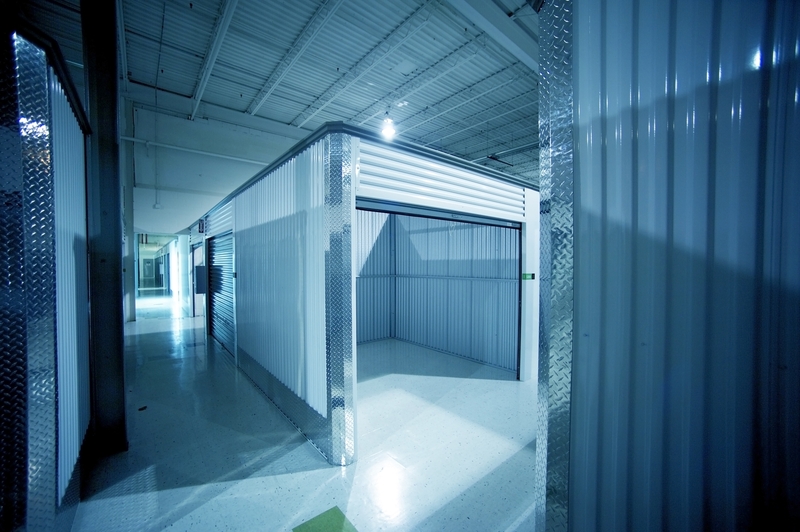Discover Effective Methods for Storing Your Freezer Temporarily
Posted on 23/05/2025
Discover Effective Methods for Storing Your Freezer Temporarily
Are you planning a move, renovating your kitchen, or dealing with unexpected situations requiring you to store your freezer temporarily? Whatever your reason for a temporary freezer storage solution, ensuring proper storage methods is essential to protect your appliance's integrity and longevity. In this comprehensive guide, we'll explore the best practices, considerations, and tips for temporarily storing your freezer. Learn how to safeguard your investment, avoid costly mistakes, and ensure your freezer is ready for use once you need it again!
Why Might You Need to Store Your Freezer Temporarily?
There are many scenarios where you might need to find a short-term solution for freezer storage. Here are some common reasons:
- Moving homes or apartments
- Renovating your kitchen or utility spaces
- Temporarily downsizing living spaces
- Seasonal storage for rarely used appliances
- Emergency situations, such as flooding or electrical work
Whatever your motivation, taking proper care during the storage process will allow your freezer to remain in great condition, ready for reinstallation when needed.

Preparing Your Freezer for Temporary Storage: Step-by-Step Guide
Proper preparation is the foundation of effective freezer storage for any time period. Follow these critical steps before moving your freezer into storage:
1. Remove All Items and Defrost
- Unplug the freezer at least 24 hours prior to storage.
- Empty its contents completely. This prevents food spoilage and unpleasant odors.
- Allow any ice buildup to melt naturally or gently speed up the process with towels and warm water.
- Wipe down the interior thoroughly and dry every surface. Any lingering moisture can lead to mold or mildew during storage.
2. Clean and Deodorize the Appliance
- Wipe all shelves, drawers, and seals with a mixture of baking soda and warm water. This neutralizes odors and kills bacteria.
- For extra freshness, place a box of baking soda inside the freezer during storage, or use odor eliminator products as needed.
3. Secure Cords and Shelves
- Remove or firmly secure all detachable shelves and drawers. This prevents internal damage in transit.
- Wrap the power cord securely and tape it to the freezer to prevent tripping or tangling.
4. Leave Doors Ajar
- Store your freezer with the door slightly open. This simple step is crucial for preventing musty odors and mold growth.
- Wedge a soft object (like a folded towel) in the door to ensure proper ventilation over time.
5. Move the Freezer Carefully
- Recruit help or use a moving dolly for safe transportation--freezers can be heavy and unwieldy.
- Keep the appliance upright at all times to avoid compressor damage. If tilting is unavoidable, let it stand upright for the same amount of time before plugging in again.
Best Places to Store Your Freezer Temporarily
The location where you choose to store your freezer can make a significant difference in its condition upon retrieval. Here are common temporary freezer storage locations, ranked from best to worst, with detailed insights:
1. Climate-Controlled Storage Units
- Ideal environment: Maintains consistent temperature and humidity, protecting sensitive components and finishes.
- Security: Most reputable facilities offer surveillance and secure access.
- Accessibility: Allows convenient visits for inspection or retrieval.
Tip: Invest in climate control especially for long-term or seasonal storage exceeding a month.
2. Garage or Basement
- Convenience: Storing at-home simplifies accessibility and often reduces costs.
- Considerations: Garages and basements are often non-climate controlled, exposing your freezer to temperature fluctuations or high humidity, leading to rust or internal condensation.
If using these spaces, elevate the freezer on pallets and avoid contact with direct sunlight or excessive moisture.
3. Professional Appliance Storage Facilities
- Some companies specialize in the storage of large appliances, offering optimal environmental conditions, skilled movers, and sometimes insurance for your appliance.
- Typically more expensive, but adds peace of mind for valuable or commercial freezers.
4. Outdoor Sheds (With Caution)
- Usually only recommended for short periods during mild weather.
- Extreme cold or heat can damage your freezer's seals and internal components.
- Rodents and pests can be an issue; ensure the shed is sealed and clean.
Essential Tips and Tricks for Storing a Freezer Temporarily
Beyond prepping and finding the right place to store your appliance, consider these proven techniques to ensure the best freezer storage outcomes:
- Store your freezer upright--laying it down risks oil/freon displacement and can damage the compressor.
- Cover your freezer with a breathable sheet or tarp. Avoid plastic which traps moisture.
- Check regularly: If possible, inspect your freezer during storage for pests, moisture, or unpleasant smells.
- Ventilation is vital: Never shrink-wrap a freezer or seal it too tightly. Air flow prevents internal dampness and corrosion.
- Beware of temperature extremes: Both excessive heat and freezing temps can compromise your freezer's electrical and insulation systems.
Common Mistakes to Avoid With Temporary Freezer Storage
- Leaving food inside. Even non-perishables can attract pests and create unpleasant odors.
- Storing while wet. Any residual moisture almost guarantees mold or corrosion.
- Forgetting to wedge the door open. Airflow is essential for keeping your freezer odor-free and safe from internal mold buildup.
- Storing outdoors during harsh weather. Protect your investment by keeping your freezer in appropriately sheltered spaces.
- Reconnecting immediately after transit. Always wait several hours--and preferably up to 24 hours--after moving to an upright position before powering on your freezer. This lets compressor oil settle.
How Long Can You Store a Freezer Temporarily?
The correct procedure for temporarily storing a freezer does not usually differ for periods of a few days or several months, but longer storage requires extra care. In climates with wide temperature swings or high humidity, even a short period in a poor environment can lead to irreparable damage.
- Short-Term Storage (Up to 1 Month): Most home environments will suffice as long as the freezer is clean, dry, and upright with the door slightly ajar.
- Mid-Term Storage (1-6 Months): Choose a stable, protected environment. Consider using desiccant bags or silica gel to manage humidity inside the unit.
- Long-Term Storage (6+ Months): Opt for professional or climate-controlled storage and inspect routinely to ensure no issues like corrosion or pests occur.
How to Restart Your Freezer After Temporary Storage
When it's time to move your freezer back into place, these steps will ensure it functions properly:
- Inspect for damage or pests. Check all surfaces, seals, and mechanical components.
- Allow the freezer to stand upright for at least 24 hours. This is especially vital if it was ever on its side during moving.
- Plug in and test the freezer empty for several hours, monitoring temperature and functionality.
- Clean again as needed, reinsert shelves, and refill with food only after confirming cooling efficiency.
If you detect any unusual noises, performance issues, or damage to the seals or compressor, seek professional repair before regular use.
Frequently Asked Questions About Temporary Freezer Storage
Can a freezer be stored outside?
Storing a freezer outdoors is generally discouraged unless absolutely necessary and only for short periods during moderate weather. Always protect it from rain, sun, and pests. Long-term exterior storage can cause severe damage from moisture and temperature swings.
How do I prevent mold in my freezer during storage?
To prevent mold while storing your freezer:
- Ensure the interior and all crevices are completely dry.
- Use baking soda or commercial odor eliminators.
- Wedge the door open with a small towel or object for airflow.
Is it okay to store my freezer on its back or side?
No. Freezers should always be stored upright to protect the compressor and cooling system. Storing on its side may allow liquids to move into areas that damage function. If you must tilt during moving, wait an equivalent period upright before plugging in after storage.
Can I store my freezer plugged in during renovation or moves?
While it's possible for short periods, it's safer to empty and unplug your freezer for any move or long-standing work to avoid shocks, circuit overloads, or accidental damage during transit.

Conclusion: Storing Your Freezer Temporarily With Confidence
By following these effective methods for storing your freezer temporarily, you will successfully protect both your appliance and your food safety. Careful cleaning, strategic placement, and attention to environmental conditions are key. Whether your freezer needs to be kept safe for a move, a renovation, or simply a change of circumstances, these steps will ensure your unit works like new when you bring it back online.
If you're seeking more appliance care tips or need support finding local, secure storage solutions, don't hesitate to consult with professional moving and storage companies. With a little preparation and mindfulness, your freezer will continue to serve you well for years to come!
Ready to Store Your Freezer?
Start by following these guidelines and protect your freezer from mold, damage, and unnecessary repair costs in any temporary storage situation. Discover the difference careful planning and smart choices can make!
```


